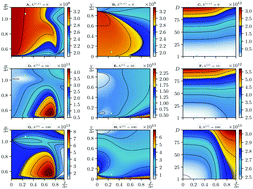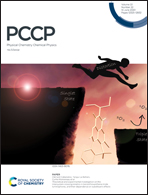Nonadiabatic sunlight harvesting†
Abstract
Experimental and theoretical evidence points out the crucial role of specific intramolecular vibrational modes resonant with excitonic splittings in the interpretation of long-lived coherences observed in the two-dimensional spectra of some natural and synthetic light harvesting complexes. For the natural situation of illumination by incoherent (sun)light, the relevance of these vibrations is analyzed here for light-harvesting vibronic prototype dimers. The detailed analysis of the density matrix dynamics reveals that the inclusion of intramolecular vibrational modes reinforces the exciton coherence up to one order of magnitude and may increase the populations of lowest energy single exciton states, as well as populations and coherences in the site basis. In sharp contrast to the case of initial-state preparation by coherent (laser)light-sources, the initial thermal state of the local vibrational modes, as well as that of the anticorrelated vibrational mode, evolves devoid of non-classical correlations as confirmed by the absence of negative values of its phase-space quasi-probability distribution at all times. Therefore, not only the long-lived coherences observed in the two-dimensional spectra are induced by the coherent character of pulsed laser sources, but it is unambiguously shown here that the non-classical character generally assigned to the anticorrelated vibrational mode also comes as the result of the preparation of the initial state by coherent pulsed laser sources.



 Please wait while we load your content...
Please wait while we load your content...